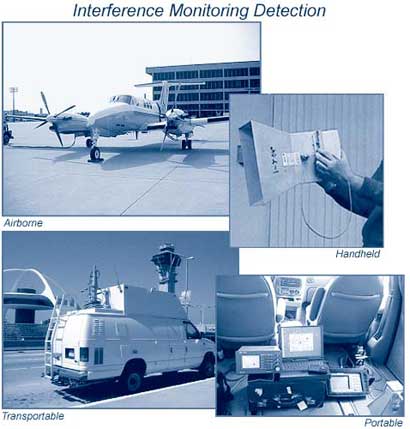Navigation Services
NAS Implementation - Interference Detection, Reporting, Location and Mitigation The Federal Aviation Administration (FAA) is continuing to develop the capability to detect, report, locate and mitigate interference to the GPS, WAAS and LAAS. An Interference Working Group was formed under the auspices of the former Satellite Navigation Operational Implementation Team (SOIT) to address the vulnerability of GPS, WAAS and LAAS receivers to intentional and unintentional interference. In addition, to ensure that FAA understood the threat from jamming and spoofing:
The FAA has studied the threats, vulnerabilities and risks and explored the technologies and architectures that will support the use of GPS. New and revised procedures are in place and training has been provided to air traffic controllers, flight service specialists and frequency management officials on how to detect and report incidents of interference. Procedures have also been developed to assist the controllers and pilots in coping with GPS outages. Eight FAA directives have been revised, four memorandums of agreement are being updated and air traffic GPS interference simulations were conducted in 2002. Working through the FAA Office of Spectrum Policy and Management (ASR) - a suite of interference detection and location systems have been acquired and distributed throughout the NAS. These systems include 10 radiofrequency interference (RFI) mobile vans, 33 portable systems and over 200 handheld locating devices. In addition, 21 FAA flight inspection aircraft have been equipped with interference locating systems. In the event of intentional or unintentional interference, this entire suite of systems will be applied to locate the source of interference. The FAA has agreements with the Federal Communications Commission (FCC) and the Federal Bureau of Investigation and is negotiating with the Department of Homeland Security and the TSA who will be called upon when necessary to enforce FCC regulations and to apply force if needed to deal with violators. Following is a pictorial review of the equipment currently in use throughout the NAS.
|

